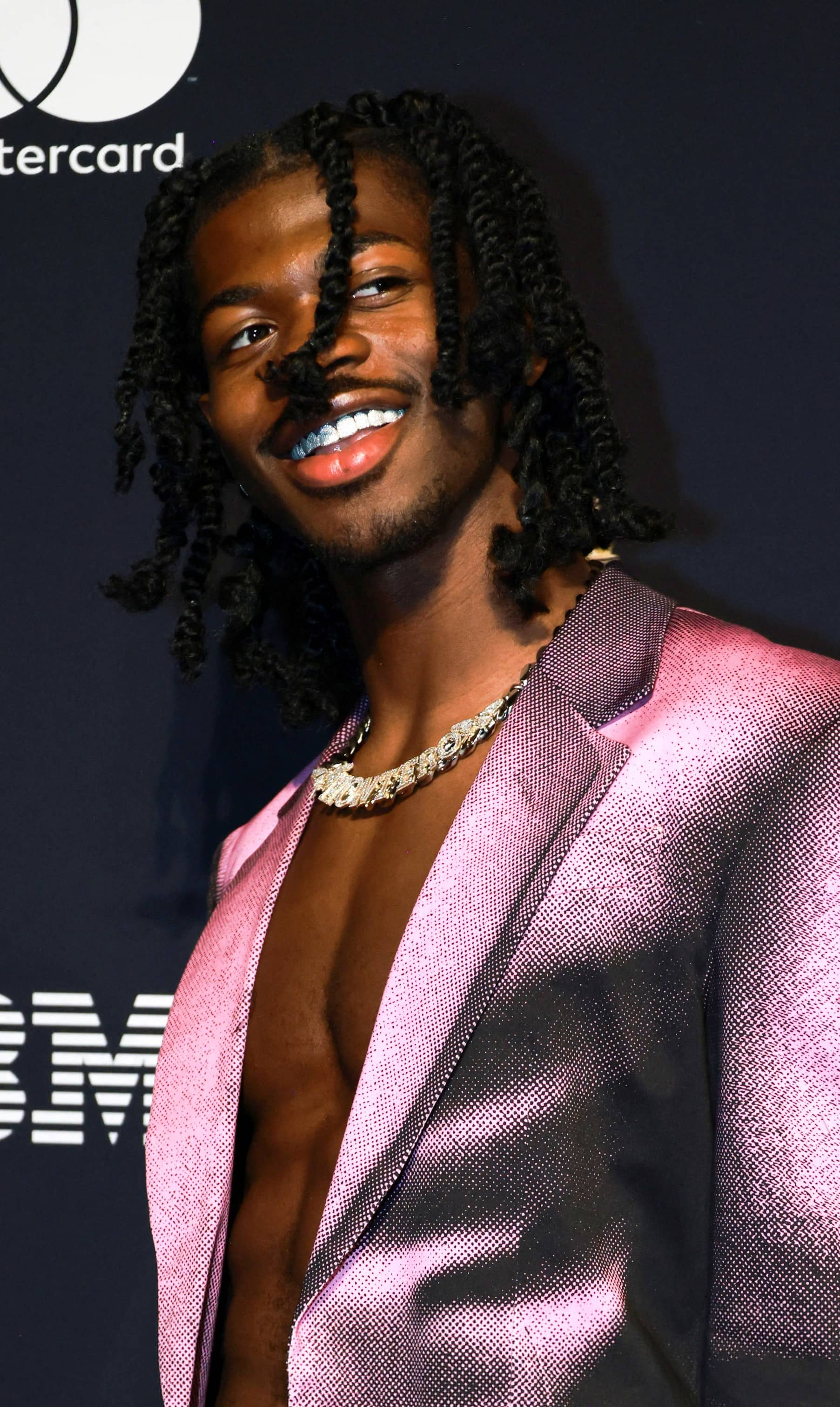

Lil Nas X’s health, particularly his mental stability, has been a topic of discussion since August 21st, after the rapper was discovered walking down Ventura Boulevard in Los Angeles in the predawn hours wearing nothing but underwear and cowboy boots. Lil Nas X, born Montero Lamar Hill, was recorded conversing with the person taping him as he strutted down the empty street, clearly in a state of distress. From the moment video footage hit the internet, online speculation almost immediately veered toward an accusation: this is a publicity stunt for a new album.
Lil Nas X has historically lived for the drama, from giving Satan a lap dance in the music video for the 2021 single “Montero (Call Me By Your Name)” to releasing controversial, unofficial Nike “Satan Shoes” featuring a bronze pentagram, an inverted cross, and a drop of real human blood. His actions since his “Old Town Road” debut have been attention-grabbing, to say the least, and the artist has often moved to capitalize on both exaltation and scrutiny alike. However, the latest headlines surrounding Lil Nas X seem to point toward an artist crying out for help, rather than attention.
Rampant social media chatter combined with little information has convoluted the actual facts and details of Lil Nas X’s recent legal and personal issues. Here’s what we know so far and how to think about what we don’t know yet, with additional context about mental health crises and how they’re perceived.
According to TMZ and Rolling Stone, Lil Nas X was spotted nearly nude in the early morning on August 21st walking down Ventura Boulevard in Studio City. The Los Angeles Police Department, without naming Lil Nas X, confirmed that a young man was behaving erratically and speaking incoherently to someone filming him. At one point, he placed an orange traffic cone on his head. Police were called to the scene. Per the Los Angeles County District Attorney’s office, “Upon arrival, he is accused of assaulting the responding officers trying to take him into custody, injuring at least three of them.” Lil Nas X was restrained, handcuffed, and transported to a nearby hospital for evaluation related to a suspected overdose. He was then taken to jail, where he was held over the weekend.
Within days, reports shifted from Hill being hospitalized for a possible drug overdose to the rapper facing serious charges. On August 25th, Lil Nas X pleaded not guilty to four felony charges: three counts of battery with injury on a police officer and one felony count of resisting an executive officer. If convicted, Lil Nas X faces up to five years in state prison. A judge set bail at $75,000 and said the rapper must attend an outpatient drug rehabilitation program. However, one of the artist’s attorneys, Christy O’Connor, said that her client was not taking illegal drugs prior to his arrest. “This is just an aberrant episode in an otherwise productive life,” O’Connor said.
Prior to the incident, Lil Nas X shared a barrage of odd posts on his Instagram page, after deleting all earlier posts two days before. On August 19th and 20th, he posted nearly a dozen images and videos, including mirror selfies, art, and clutter in what appears to be his home; some of the posts featured unreleased music. Lil Nas X also changed his display name to “QUEEN MADELINE,” which still appears on his profile.
“Your girl is gonna be okay, y’all. Okay?” Hill said in an Instagram Story video on August 26th, after being released from police custody. “She’s gonna be all right; she’s gonna be all right. Shit. That was fucking terrifying. That was terrifying. That was a terrifying last four days, but your girl is gonna be all right.”
What’s the Latest Lil Nas X News?
On September 15th, Lil Nas X’s lawyers confirmed in a pre-trial hearing that he is “in treatment” at an undisclosed facility in another state following his arrest and arraignment on felony charges last month. According to Rolling Stone, Los Angeles County Superior Court Judge Shellie Samuels has sealed the details of the type of care Lil Nas X is receiving, only revealing that he is “allowed to remain out of state as long as he remains in treatment.” Once he transitions to outpatient treatment, his status will be re-evaluated. Hill’s lawyer, Drew Findling, spoke after the hearing, providing additional insight into Lil Nas X’s next steps while still holding details close to the vest.
“You heard the ‘treatment’ word,” Findling stated. “We’re doing what is best for Montero from a personal standpoint and a professional standpoint, but most importantly, for his well-being. He is surrounded by an amazing family, an amazing team of people that care about him and love him. And we’re just addressing those issues. It’s really as simple as that. He’s had a great life, and he’ll continue to have a great life. This is a bump that he’s gonna get over.”
The rapper’s next court date is set for November.
What Don’t We Know About Lil Nas X?
In the aftermath of Lil Nas X’s crisis, social media pop culture pages like “ThePopTingz” have posted viral rumors that allegedly provide updates on the rapper’s health. “Tests confirmed that Lil Nas X was not under the influence of drugs or alcohol during last week’s episode,” a tweet with 114,000-plus likes and 22 million views read. “The singer reportedly suffered a psychotic episode.” This “report” is unconfirmed and cannot be traced to any medical or legal sources. The exact status of Lil Nas X’s mental health has not been revealed.
Lil Nas X’s father, Robert Stafford, has offered glimpses into what his son might be encountering mentally. “I understand how the music business is,” Stafford said in an interview with The Times of London. “It’s like a high. When you get to that level, you want that drug again, you want to hit that high again.”
Stafford continued, expressing empathy for his son. “For a 26-year-old to have to deal with what he’s dealing with — to be a breadwinner for a lot of people, the inability to change his mother’s situation and the pressure he puts on himself,” Stafford said, shedding light on Hill’s mother’s ongoing addiction battle. “That can weigh heavily on your heart.”
Despite the lack of information about his stability, Lil Nas X’s father emphasized that the entertainer was remorseful, especially with respect to his fans. “He asked me to say, ‘Tell everybody I’m sorry they saw me like that,’” Stafford said. “Even in that moment, he was apologizing to people for something he was going through.”
What Has Lil Nas X Previously Said About His Mental Health?
Lil Nas X has been open about his struggles with mental health in the past. In February 2021, the artist posted a series of videos to TikTok, which broke down the highs and lows of his life and career. Across the visuals, Lil Nas X explains that while he was the first in his family to go to college, he had no friends, suffered from depression and hypochondria, and struggled with grief due to his grandmother’s passing. After dropping out of college and leaning into his creativity, Lil Nas X experienced short-lived happiness. Complicated family circumstances and financial insecurity ultimately impacted the rapper’s ability to continue on his mental health journey, but he hit it big with “Old Town Road” and soon faced a completely new set of issues anchored by anxiety. “During this time ‘Old Town Road’ was still killing it while I was… spiraling,” Lil Nas X captioned in the final installment of the video series. “I found myself in a hotel room contemplating ending it all. But I didn’t.”
Months later, Lil Nas X released the music video for “Sun Goes Down,” which features an all-knowing version of the artist visiting a teenaged version of himself struggling with self-acceptance. As the song unfolds, Lil Nas X reveals feelings of insecurity around his appearance and sexuality, a point hammered home by vulnerable lyrics that speak on ideation: “I wanna run away/ Don’t wanna lie, I don’t want a life/ Send me a gun and I’ll see the sun.”
In September 2021, Lil Nas X was honored with the Suicide Prevention Advocate of the Year Award from the advocacy group The Trevor Project. A nonprofit dedicated to suicide prevention and crisis intervention for lesbian, gay, bisexual, transgender, queer, and questioning young people, The Trevor Project cited Lil Nas X’s “openness about struggling with his sexuality and suicidal ideation, his continued advocacy around mental health issues, and his unapologetic celebration of his queer identity.”
Amit Paley, CEO and executive director at The Trevor Project, said the awareness that Lil Nas X has brought to mental health and suicide prevention has been “profound.” “He has done it in a way that has resonated and impacted communities where these conversations are often taboo, but where they are so needed,” Paley said. “The fact that he has been so open, so vulnerable about his mental health journey, his thoughts of suicide, he is really helping to destigmatize conversations that are too often shrouded in shame.”
What Is Mental Health Stigma?
Mental health stigma in the U.S. has long shaped how people experience illness and care. Unlike physical ailments, mental illness is often met with fear, shame, or moral judgment. For much of the 20th century, people with serious conditions were confined to underfunded asylums, reinforcing the idea that they were dangerous “others.” Deinstitutionalization in the 1950s and ’60s promised community care, but inadequate funding left many without support, pushing them into prisons or homelessness — outcomes that deepened stigma, which remains today.
According to the National Alliance on Mental Illness (NAMI), 1 in 5 U.S. adults experience mental illness each year, and 1 in 20 U.S. adults experience serious mental illness each year. Mental health episodes are common, and they don’t always lead to diagnoses. For example, per the National Institute of Mental Health, psychosis can be a symptom of a mental illness, such as bipolar disorder, schizophrenia, or severe depression — but a person can also experience psychosis and never be diagnosed with a disorder at all. There isn’t a single cause of psychosis, which is described as an intensified mental state in which one experiences delusions and hallucinations, and exhibits incoherent speech or inappropriate behaviors.
The media often links mental illness to violence, which has impacted response to crises. According to a report released by the entity Mapping Police Violence, 118 people were killed in 2024 after police responded to reports of someone behaving erratically or having a mental health crisis. For those who survive police encounters, their typical next step is jails or prisons, which are sometimes referred to as “the new asylums.” Per the Treatment Advocacy Center, “the Los Angeles County Jail, Chicago’s Cook County Jail, or New York’s Riker’s Island Jail Complex each hold more mentally ill inmates than any remaining psychiatric hospital in the United States.” Overall, approximately 20 percent of inmates in jails and 15 percent of inmates in state prisons are now estimated to have a serious mental illness.
Lil Nas X’s mental health crisis is the latest example of marginalized groups facing compounded barriers rooted in both cultural taboos and systemic inequities. Many who are uninformed internalize this stigma, delaying help and worsening outcomes for those most in need. Dismantling stigma isn’t a one-time event — it’s an ongoing cultural shift toward seeing mental health as integral to health itself.








